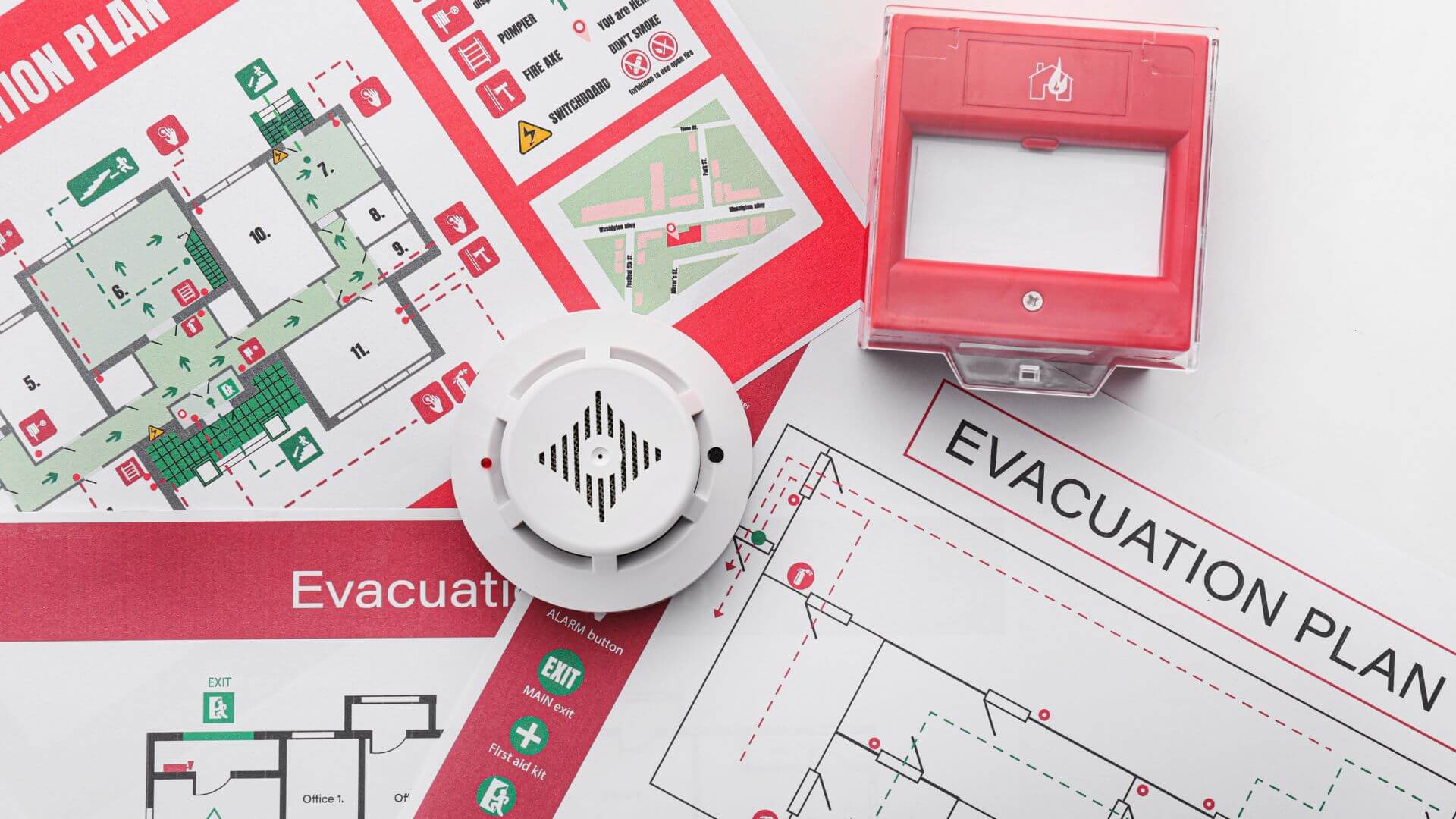Employers have both a moral and legal obligation to protect the health and safety of their workforce, this is referred to as your ‘duty of care’. The responsibilities that are incorporated under this term include all health and safety considerations as well as legal and financial obligations. This can include things like employers liability insurance, for instance.
Not providing your workforce with an adequate duty of care can not only result in potential workplace incidents, but can also result in your business facing reputational damage as well as having to navigate costly legal litigation. In more extreme cases it can result in irreparable damage and closure due to employer negligence.Ensure your business remains compliant with law, as well as health and safety regulations, contact Croner today on 0800 470 2839 and get award winning advice from our dedicated team of experts.

What is ‘Duty of Care’ and what does it mean for employers?
Duty of care is a legal responsibility, failing to comply means that employers are liable in the eyes of the law. Therefore, it is good practice to ensure that your business is fully compliant to avoid legal consequences.
Employers should ensure the health, safety and well-being of all persons on their business premises, not just staff but customers and other members of the public as well.
Examples of an employer’s duty of care
The Health and Safety at Work Act 1974 states:
“It shall be the duty of every employer to ensure, so far as is reasonably practicable, the health, safety and welfare at work of all his employees.”
To give a couple of simple examples, this could include:
An employee informs their manager they’re suffering from Repetitive Strain Injury in their wrists. As an employer, you could then provide them with a specialist keyboard. This would allow them to continue working normally until they recover.

Another example would be to provide extra access points for those in your business with a disability. This will ensure they don’t struggle to exit and enter your premises and demonstrate that you take their well-being seriously.
What is covered under duty of care?
Employers need to be aware of several aspects when it comes to fulfilling their duty of care. Whilst every business must uphold a duty of care, be aware that certain industries have their own specific obligations that employers must legally adhere to. Some examples of care that are applicable to all businesses are:
Responsibility for Employees’ Health & Safety
This should be a primary consideration, for all employers and there is a legal requirement to maintain a specific minimum standard and ensure that there are no unnecessary health and safety risks posing a threat to your employees and or anyone else on your business premises.
This is primarily set out in the 'Health and Safety at Work etc. Act 1974', which covers both employer and employee responsibilities when it comes to workplace health and safety, and safe working practices. This includes carrying out workplace risk assessments where necessary.
Ensuring compliance with safeguarding practices
Ensuring that your business is compliant with safeguarding laws, is a must for employers. This encompasses a responsibility to safeguard both children and vulnerable adults from harm.Part of an employer’s duty of care would be observing any potential safeguarding issues and introducing new working practices to ensure the welfare of individuals. For example, when recruiting a potential candidate for work with vulnerable adults.
Employee mental health and well-being
Employee mental health is on equal parity with physical health and employers should treat this as such. When it comes to duty of care and mental health employers should ensure that any employee who has a mental health condition is given fair opportunities at work.
Employees are also entitled to reasonable adjustments, which employers are legally obliged to comply with.

Ensuring good staff well-being also falls under employer duty of care. This means employers should make an effort to ensure staff comfort and health whilst in the workplace this also means safeguarding them from harassment and stress. There are potential legal consequences if this is not followed. That means safeguarding them from harassment and stress.
Equality, diversity and inclusion
Employers are required by law to foster a workplace that ensures equal opportunities for individuals from diverse backgrounds. This obligation encompasses both those with protected characteristics, such as race, religion, gender, and sexual orientation, and those who do not possess these specific traits.

Making sure that everyone is involved in the everyday workplace practice regardless of differences, ensures inclusion as part of your duty of care in the workplace.
Employment law and ‘duty of care’
The duty of care law in the UK reflects the statutory duties you have as an employer. All organisations must adhere to their ‘duty of care’, regardless of the type of business, be it public, private or voluntary.
For example, the law requires you to carry out a risk assessment. This will address all risks that might cause harm in your workplace. Another common law regarding duty of care to employees is consultation. Legally, you must consult employees on any health & safety risks they’ll face as part of their role. These are just some of your responsibilities from a health & safety standpoint.
If you cannot do everything that is reasonably possible to prevent an accident or work-related illness, then you are likely to be in breach of duty of care. Multiple pieces of legislation are in place that governs and enforces these legal responsibilities and employers should familiarise themselves with these.
The Health and Safety at Work etc. Act 1974
The HSWA is the benchmark when it comes to workplace health and safety. Within, the act outlines an employer's (and employees) legal responsibilities to uphold safe working practice and to protect the health and safety of all persons in the workplace and how to maintain a healthy work environment.

The Management of Health and Safety at Work Regulations 1999
Expanding on and outlining employer requirements under the HSWA, these regulations are designed to help employers manage workplace health and safety in accordance with written legislation and applies to all workplace activities.
RIDDOR - The Reporting of Injuries, Diseases and Dangerous Occurrences Regulations 2013
Applying to occupational health and reporting work-related accidents, RIDDOR outlines employers duties when it comes to managing these. This can include reporting instances of work-related health conditions, as well as incidents to the Health and Safety Executive.
COSHH - The Control of Substances Hazardous to Health Regulations 2002
COSHH outlines employers duties regarding the assessment of hazardous substances in the workplace and the legal obligations that employers have to their workforce to provide adequate precautions. This also includes employers’ obligations when it comes to minimising the harm these substances cause, where exposure is impossible to eradicate entirely.
PUWER - The Provisions and Use of Work Equipment Regulations 1998
These regulations govern the proper maintenance and working order of work equipment, and employers’ legal obligations in this. PUWER covers ensuring that working equipment is fit for purpose and undergoes proper maintenance and inspection by a reasonable person.
How can employers comply with duty of care?
Employers should take all reasonable precautions to ensure compliance with their ethical and legal obligations that fall under their duty of care.
When correctly implemented it means you can effectively focus on business matters, safe in the knowledge that your business, staff and clients are protected.
Create a duty of care policy
Creating a clear and easily accessible policy for staff can easily communicate your responsibilities as an employer as well as outlining your expectations as an employer. This can be easily communicated through staff handbooks, as well as through employee contracts.
Make sure to comply with the conditions specified in the policy guidelines. Failing to do so could lead to, amongst other things, high staff turnover as well as potential employment tribunals.
Conduct risk assessments
Conducting regular risk assessments where necessary is a legal requirement of workplace health and safety. Applying the results of your findings is a good way to improve on the overall health and safety of the workplace.
Train staff on safe work practices
If staff are not trained on safe practice appropriately then there will be an increase in the risk of workplace accidents, which as an employer will land firmly on your shoulders, should this occur.

An essential aspect of your responsibility as an employer involves ensuring that employees receive adequate training on safe work procedures. An employer failing to train their staff could result in claims for personal injury or even claims of negligence against your business.
Going to tribunal for non compliance of your legal duty of care as an employer, can not only be damaging to company coffers but to your company’s reputation as well.
Take staff concerns seriously
Employees have a legal right to raise issues if they feel that there is cause for concern.
Creating an environment where staff are encouraged to raise these concerns, and at the same time creating a system where they can do this effectively will benefit your business in several ways.
It can help create trust, and it also prevents the employee having to go over your head and going directly to a body like the HSE.
Promote and encourage employee welfare
Communicating to employees that your business cares for their health and well-being is not only beneficial to them, but it can benefit your business with increased employee retention and productivity too.

Employees who consider themselves valued are likely to stay with a company. Furthermore, the less work related stress they encounter the better their performance. Introducing an EAP or introducing a mental health policy can go a long way to achieving this.
Mental and physical health should be given equal attention when promoting employee well-being and employers must assess if their working practices could worsen a person's health condition, as under employment law this is prohibited.
Contact the Health and Safety expert and learn more about ‘Duty of Care’
Croner has been helping employers with their HR, Employment Law and Health and Safety needs for over 80 years. Speak to one of our dedicated advisors about duty of care and ensure your business is compliant with the latest legislation. Call 0800 470 2839 today.
Got a question about duty of care and need answers in a hurry? Try Croner BrAInbox and get answers to your queries, fast!
Related resources
Categories
- Business Advice
- Contracts & Documentation
- Culture & Performance
- Disciplinary & Grievances
- Dismissals & Conduct
- Employee Conduct
- Employment Law
- End of Contract
- Equality & Discrimination
- Health & Safety
- Hiring & Managing
- Leave & Absence
- Managing Health & Safety
- Moving
- Occupational Health
- Pay & Benefits
- Recruitment
- Risk & Welfare



